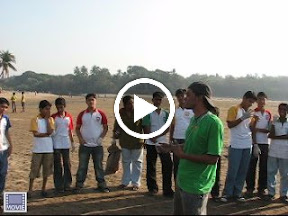.bmp)
Even as the civic body is planning to ban plastic bags, residents of Vile Parle (East) have launched a campaign to make the suburb free of plastic carry bags.
More than 35 resident associations and community groups in Vile Parle (East) have joined the initiative by civic engineer Subhash Dalvi, who has formed a core committee of vendors, shopkeepers and elected representatives.
"More than 50,000 cloth bags were distributed at a cost of Rs 5 per bag. The vendors were given options like stocking paper bags instead. They readily agreed as the cost was much lesser than that of plastic carry bags," said Dalvi. The initiative is catching on, as locals are supporting the cause.
Dalvi said the project began with creating awareness among the vegetable vendors in Vile Parle for the need of using cloth bags instead of plastic.
Fisherwomen at Vile Parle (East) have stopped using plastic bags and are wrapping fish in paper. People have also been urged to bring cloth bags from home. "We are trying to do our bit to help save the environment," said Shai Koli, a fisherwoman.
"It was a small-scale project that we tried to implement in our vicinity, but with the help of citizens and shopkeepers, it has gone to become a major social initiative," said Dalvi, who is also a resident of Vile Parle.
"We only sell things in cotton bags or paper bags. No local comes to our shop and asks for a plastic carry bag. The initiative should spread across the city," said Bakulbhai Thakkar, owner of Decent Chemist in Vile Parle.
"Since May, we have stopped giving plastic bags for takeaway items," said Jaiprakash Shetty owner of Geeta refreshments in Vile Parle.
Other suburbs like Bandra, Khar, Santacruz, Vakola, Byculla and Malad also plan to adopt the initiative. Some groups in Dadar plan to start a similar campaign in Dadar from January. "The Dadar vegetable and flower market generates a lot of plastic waste and such a campaign will help reduce it," said Rajan Taran, a Dadar resident.
Anandini Thakoor of the Hwest ward federation said: "We have begun groundwork to implement this by January 4 in our vicinity [Bandra to Santacruz]. We are also trying to convince licensed hawkers to stop using plastic carry bags."
Mayor Shraddha Jadhav, who is set to table a proposal this week to completely ban plastic bags, said that citizens' participation would help take the initiative forward.
Rajendra Bhonsale, deputy municipal commissioner (encroachments) said, "It's participation from the public that makes such ideas a success. The civic body will certainly extend all help to these groups."
At present, there is a ban on using plastic bags thinner than 50 microns.
According to statistics, Mumbai generates 8,000 metric tonnes of garbage every day of which 4 per cent consists of plastic.

.bmp)













